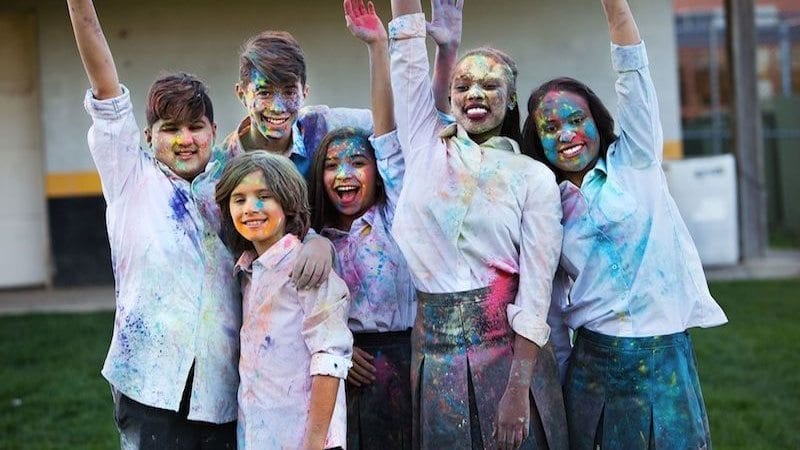We often call our highest-achieving students “gifted,” as if their abilities and knowledge were gifts that they passively received, bestowed upon them by fate, genetics, or pure luck.
The new science of expertise reveals a very different truth. Even those who initially appear to have no talent can develop expertise, or true mastery of skills and content. This means every student in your school has the potential to be an expert.
The first step to unleashing that potential? Motivation! However, motivating students in a way that sets them on the path to greatness doesn’t just happen at the classroom level, between teachers and students; it needs to be part of your school culture.
How can you and your team infuse motivation throughout the entire school? Get started with the ideas below. Then download this free guide with 30 strategies from the experts.

Source: Renaissance
Motivation Stage 1: INSPIRE
Surprise! There’s more to motivating students than just “motivation.” There are, in fact, three distinct stages of motivation. The first is inspiration—the initial ignition, the flash of discovery, the “aha” moment in which a student decides what they want to do and where they want to go. It’s how all great journeys get started. Get your students started on the path to greatness with these ideas:
Increase exposures to new and diverse experiences.
The more experiences that students have—and the more diverse those experiences are—the more likely students are to discover new interests or abilities to pursue. Field trips are a great option, but students don’t always need to leave school to make new discoveries. Consider hosting a “job fair” at your school, where parents, families, and members of the local community come and share the jobs they have, why they chose those careers, and the education and skills needed to be successful in their roles.
Eliminate the idea of average.
Does “average” actually exist? When the US Air Force decided to make an airplane cockpit based on the “average pilot,” they made a startling discovery: Not one of their pilots was average! Stop comparing your students to an average that may not exist. Instead of describing performance as above or below average, compare it to a student’s prior achievements. Encourage students to focus on what makes them unique or how they would like to be unique rather than compare themselves to an average that doesn’t really exist.

Source: Renaissance
Motivation Stage 2: INVIGORATE
As students progress along their talent journeys, they’re bound to stumble at some point. There are roadblocks, frustrations, and failures. Invigoration is how the tough keep going, even when the going gets tough. Keep students going strong even through the toughest challenges with these techniques:
Make recognition a public affair.
Students are invigorated by positive recognition—even if it’s something as simple as being mentioned in the morning announcements. Make a ceremony of awarding students with special certificates, or another type of public recognition, when they achieve personal bests. Ask your local newspaper if they’ll publish a weekly or monthly column with student achievements (and don’t forget to remind them that families are more likely to buy newspapers that feature their children!).
Set up healthy competitions.
Even a flagging spirit can suddenly be revitalized when your team is counting on you! Students rise to the occasion when they’re responsible for helping their team complete a project or win a challenge. Within your school, set up friendly competitions between different classrooms or grades to motivate students to support one another and put extra effort into their work. And don’t forget that sports aren’t the only way you can compete with neighboring schools! Challenge a rival school to see who can read the most books in a month, host the science fair with the greatest percentage of participating students, win a relay-style math competition, or even put on the best history-inspired fashion show.

Source: Renaissance
Motivation Stage 3: INSTILL
At a certain point, the goals we pursue become part of who we are. Motivation is intensified, internalized, and instilled within each student; pursuits become personal; and learning transforms into a lifelong endeavor. Make sure you’re motivating students to pursue greatness even after school ends with these strategies:
Turn students into teachers.
Help students “own” their expertise by having them play the role of an expert and teach their skills to another student. Students who play the role of teacher can be motivated to grow their skills so they have more to teach—and students who learn from them can be inspired by seeing a peer command the topic and may start on their own path to expertise in that area. Set up a schoolwide system of peer tutoring that matches older students with younger ones or more advanced students with individuals in lower-level classes. Give students the opportunity to create and share video tutorials of skills they’ve learned and encourage them to watch other students’ tutorials. Is there anything students could teach you? Set an example by being the first one to ask for help.
Envision the future self.
Ask students to envision who they will be and what they will do in the future. Have teachers set aside time and supplies for students to create a vision board or a collage depicting their dreams and aspirations fulfilled. Display students’ vision boards in a public area—like a hallway or cafeteria—where they can see them often and remember their goals. Encourage students to start thinking about the steps they need to take to get there.
Motivation can be an incredibly powerful factor in student learning. Motivating students can also represent a challenge for educators. Unlike sports and music coaches, whose learners have already expressed an interest in the activity, educators must help every student to build skills and reach grade-level expectations, no matter how little motivation they may have. We hope these ideas will help you harness the power of motivation—and unleash your students’ full potential!
Get even more strategies for motivating students when you download A Passion for Learning: 30 Ways to Motivate Students.
This article is based on Unlocking Student Talent: The New Science of Developing Expertise, the new book by Robin J. Fogarty, Gene M. Kerns, and Brian M. Pete, with foreword by K. Anders Ericsson and Robert Pool.

